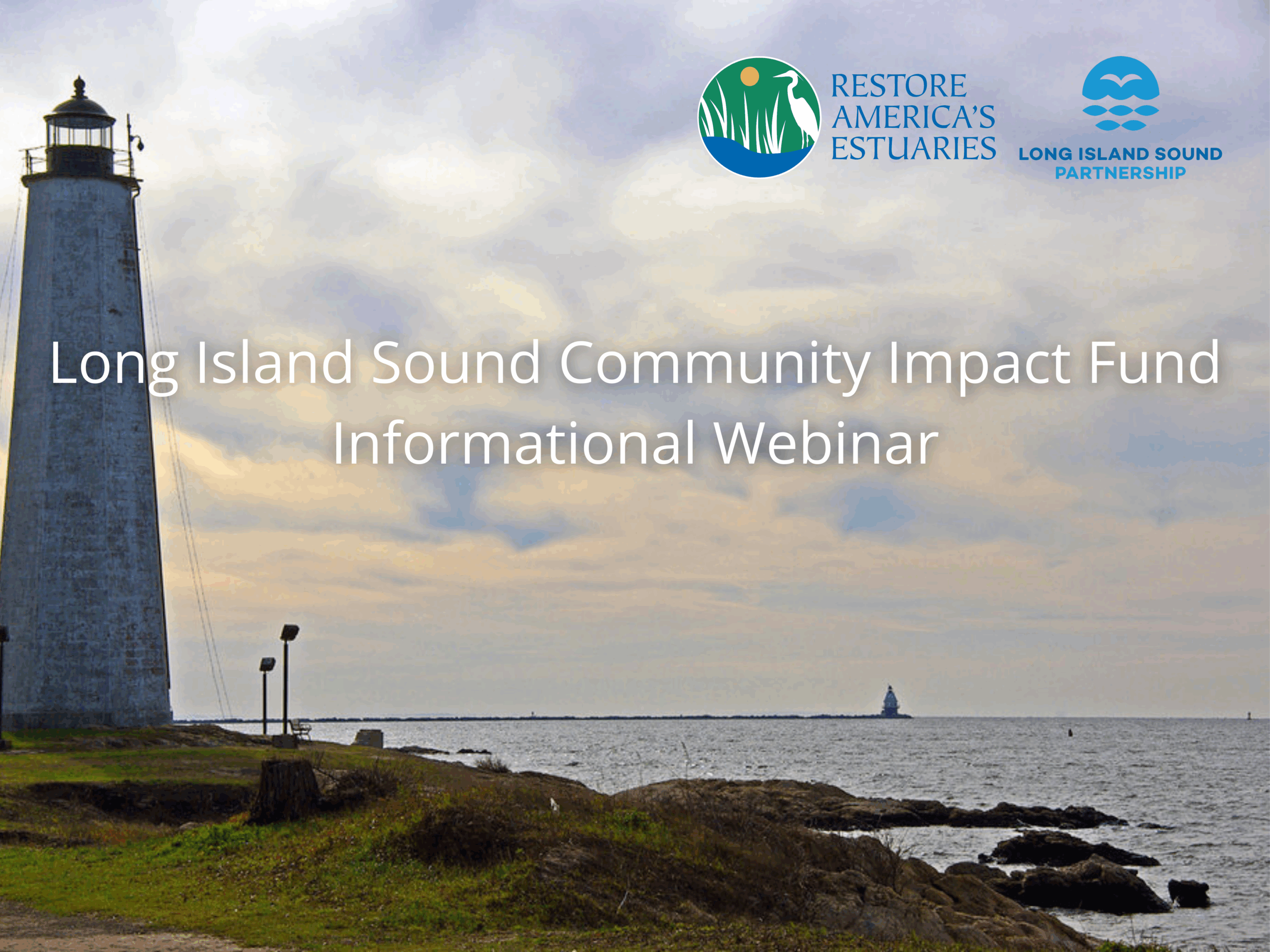Long Island Sound Community Impact Fund 2026 RFA

Watch the Informational Webinar Here
| Download Informational Slides | Download Application Training |
About the Long Island Sound Community Impact Fund (LISCIF)
The Long Island Sound Community Impact Fund (LISCIF) is a partnership among Restore America’s Estuaries, the U.S. Environmental Protection Agency, and the Long Island Sound Partnership. The purpose of LISCIF is to provide technical and financial assistance to communities for addressing environmental issues and to improve the quality and accessibility of the Long Island Sound. Technical assistance will be provided through LISCIF and is available to communities/organizations even if one does not submit a proposal for funding.
This is the third round of LISCIF funding. Up to $1,200,000 in competitive funding will be awarded to support projects in New York and Connecticut. Project proposals must incorporate Actions of the Comprehensive Conservation and Management Plan (CCMP).
For LISCIF, the geographic region refers to the Long Island Sound watershed area within New York and Connecticut.
Funding Priorities
LISCIF’s funding priorities are aligned with the CCMP themes and Actions. For 2026, LISCIF’s main funding themes are:
- Clean Waters and Healthy Watersheds
- Thriving Habitats and Abundant Wildlife
- Sustainable and Resilient Communities
- Informed and Engaged Public
The Long Island Sound Community Impact Fund aims to build capacity for organizations located in communities affected by environmental and human health risks. The Fund seeks to provide technical assistance for communities and support proposals which ultimately improve access to the Long Island Sound, while reducing overall environmental health risks. Eligible projects and activities will be community-driven and address one of the funding priorities below:
Funding is available for:
- Projects that result in quantifiable pollutant prevention or reduction.
- Restoring habitat within the Important Coastal Habitat Types targeted by LIS Partnership.
- Projects that foster a diverse balance and abundant populations of fish, birds, and wildlife.
- Public engagement, knowledge, and stewardship.
- Projects that enhance community resilience and sustainability.
- Planning and design that set-the-stage for implementation of water quality projects, eligible habitat restoration projects and resilience projects.
- Community-based science projects.
- Data management and integration projects.
- Other similar activities that the applicant proposes, and EPA approves, that are consistent with Section 119 of the Clean Water Act.
